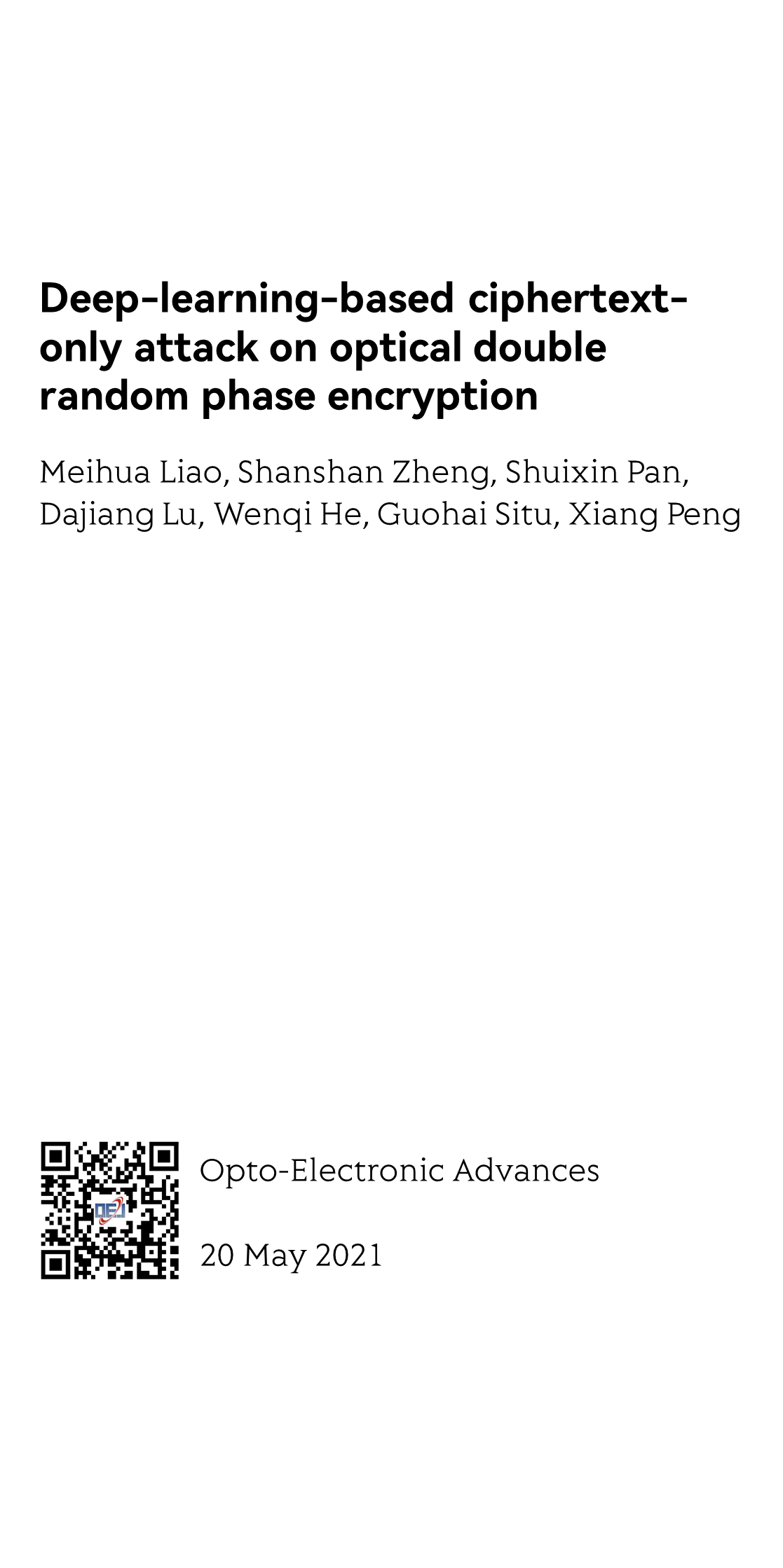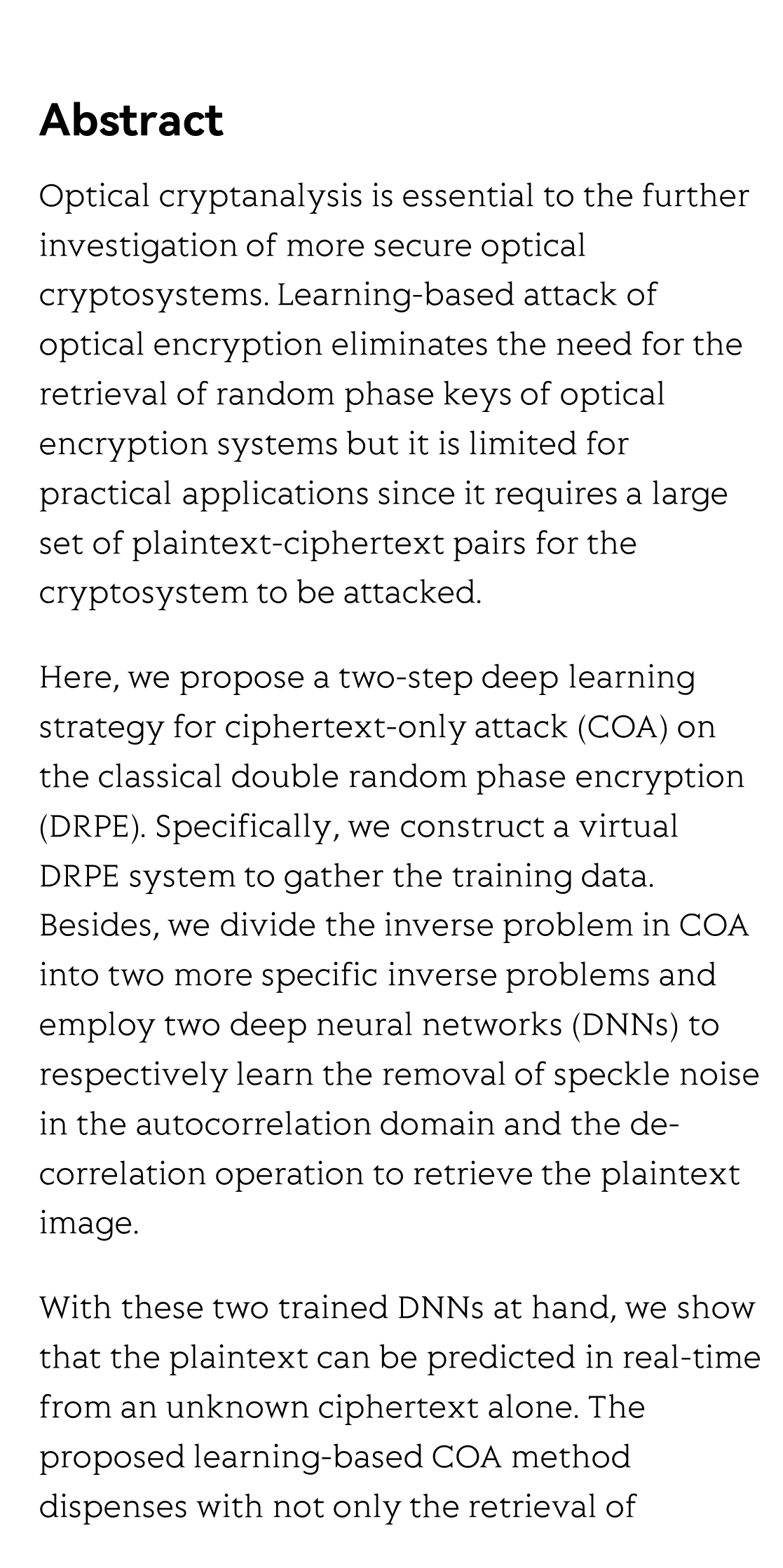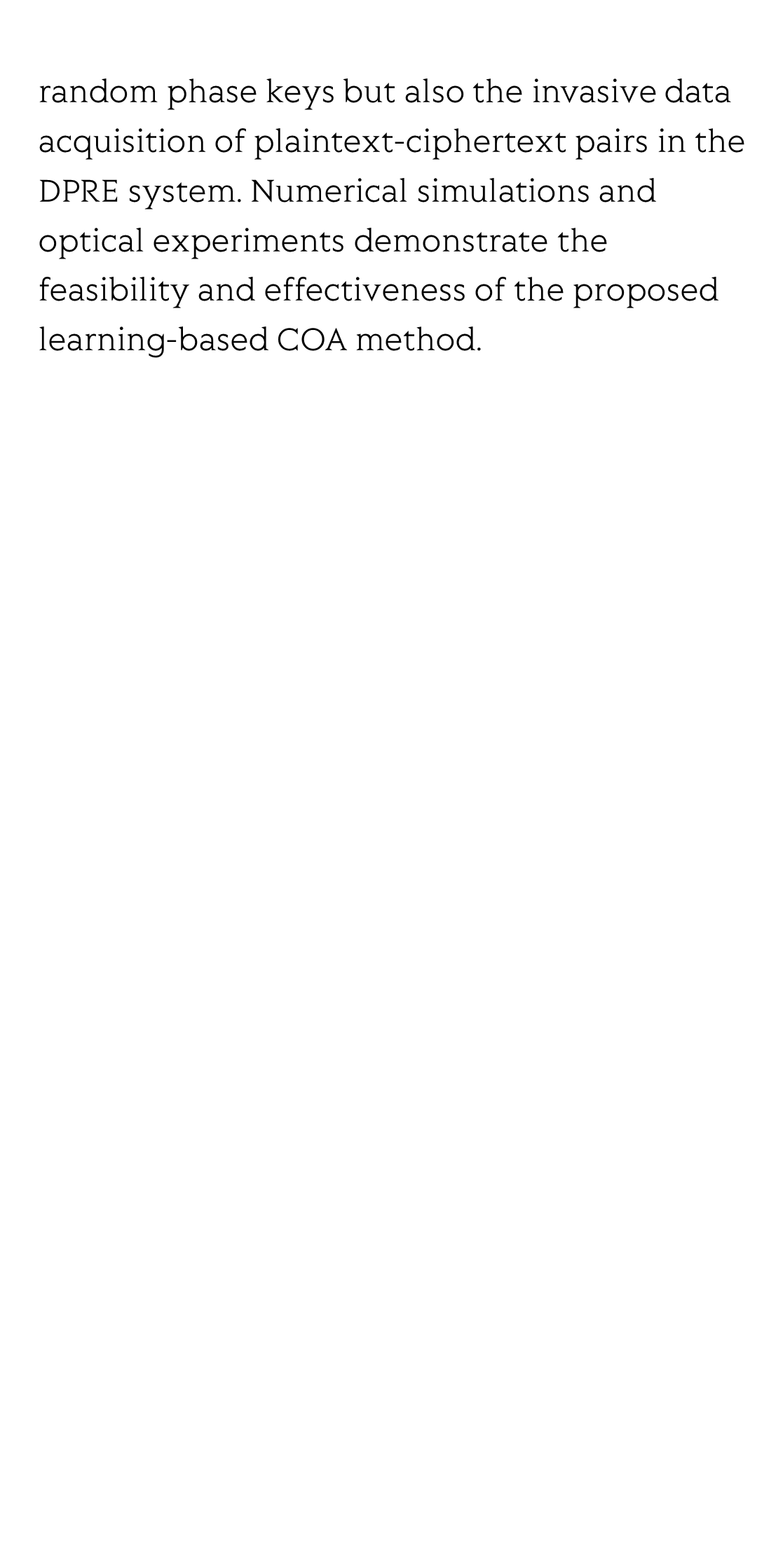(Peer-Reviewed) Deep-learning-based ciphertext-only attack on optical double random phase encryption
Meihua Liao 廖美华 ¹, Shanshan Zheng 郑珊珊 ² ³, Shuixin Pan ¹, Dajiang Lu 卢大江 ¹, Wenqi He 何文奇 ¹, Guohai Situ 司徒国海 ² ³ ⁴, Xiang Peng 彭翔 ¹
¹ Key Laboratory of Optoelectronic Devices and System of Ministry of Education and Guangdong Province, College of Physics and Optoelectronic Engineering, Shenzhen University, Shenzhen 518060, China
中国 深圳 深圳大学物理与光电工程学院 光电子器件与系统教育部/广东省重点实验室
² Shanghai Institute of Optics and Fine Mechanics, Chinese Academy of Sciences, Shanghai 201800, China
中国 上海 中国科学院上海光学精密机械研究所
³ Center of Materials Science and Optoelectronics Engineering, University of Chinese Academy of Sciences, Beijing 100049, China
中国 北京 中国科学院大学材料科学与光电技术学院
⁴ Hangzhou Institute for Advanced Study, University of Chinese Academy of Sciences, Hangzhou 310000, China
中国 杭州 中国科学院大学杭州高等研究院
Opto-Electronic Advances, 2021-05-20
Abstract
Optical cryptanalysis is essential to the further investigation of more secure optical cryptosystems. Learning-based attack of optical encryption eliminates the need for the retrieval of random phase keys of optical encryption systems but it is limited for practical applications since it requires a large set of plaintext-ciphertext pairs for the cryptosystem to be attacked.
Here, we propose a two-step deep learning strategy for ciphertext-only attack (COA) on the classical double random phase encryption (DRPE). Specifically, we construct a virtual DRPE system to gather the training data. Besides, we divide the inverse problem in COA into two more specific inverse problems and employ two deep neural networks (DNNs) to respectively learn the removal of speckle noise in the autocorrelation domain and the de-correlation operation to retrieve the plaintext image.
With these two trained DNNs at hand, we show that the plaintext can be predicted in real-time from an unknown ciphertext alone. The proposed learning-based COA method dispenses with not only the retrieval of random phase keys but also the invasive data acquisition of plaintext-ciphertext pairs in the DPRE system. Numerical simulations and optical experiments demonstrate the feasibility and effectiveness of the proposed learning-based COA method.
Flicker minimization in power-saving displays enabled by measurement of difference in flexoelectric coefficients and displacement-current in positive dielectric anisotropy liquid crystals
Junho Jung, HaYoung Jung, GyuRi Choi, HanByeol Park, Sun-Mi Park, Ki-Sun Kwon, Heui-Seok Jin, Dong-Jin Lee, Hoon Jeong, JeongKi Park, Byeong Koo Kim, Seung Hee Lee, MinSu Kim
Opto-Electronic Advances
2025-09-25
Dual-frequency angular-multiplexed fringe projection profilometry with deep learning: breaking hardware limits for ultra-high-speed 3D imaging
Wenwu Chen, Yifan Liu, Shijie Feng, Wei Yin, Jiaming Qian, Yixuan Li, Hang Zhang, Maciej Trusiak, Malgorzata Kujawinska, Qian Chen, Chao Zuo
Opto-Electronic Advances
2025-09-25







